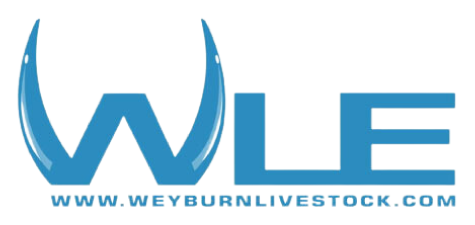Cattlepersons Here is some information or feedback that we get from the feedlots and order buyers that money minded cattle people might be interested in. Starting Jan.1 2000 some of the major finishing feedlots will no longer accept any cattle with horns. Horns cause too much carcass bruising. Horned cattle take up more bunk space. The cost of de-horning feeder cattle including the lack of weight gain during the recovery period is just not efficient for the bigger operators.
If an order buyer ships any horned cattle in with the rest of the load the price will be taken off of the invoice and not paid for. They will be reloaded and sent back.
Now that some of the big feedlots have started this, others will follow. You will still be able to sell cattle with horns on, but the price difference will steadily increase as more feedlots adopt this policy. Auction markets that have not made any effort to sort the horned cattle separate in the past will have to change their policy now.
I have been saying for a long time that as a rule of thumb calves with horns on, usually sell for about five cents a pound less than dehorned calves of equal quality. On a five hundred-pound calf that is twenty-five dollars less. Plus the one-dollar per horn deducted by the Saskatchewan Horned Cattle Fund. Most people make the effort and pick up that extra money. Others feel that it is not worth the effort. By next fall the difference could be as much as ten cents per pound, with less competitive bidding as more feedlots refuse to buy horned cattle.
Every year more and more feedlots are refusing bull calves and part bulls. Part bulls are known in the industry as “belly nutters”. Bulls and stags take longer to finish than steers. Many of them won’t make the “A’ grade. Those that don’t, sell for less when they are finished. Trying to change them to steers at feedlot size is costly and sets the calf back several weeks. Obviously, they have to be bought at a discount. Not at steer price.
Practically all calves are processed through the chute and squeeze after being unloaded at the feedlots. As they receive their vaccinations and implants etc, their scrotums are examined by hand to make sure they are empty. If one or two testicles are found, or part testicles, they will either be refused or fifty to seventy five dollars taken off of the invoice of the buyer that sent the cattle as steers. Obviously cattle buyers are going to be very careful that there be no bulls or stags in with the steers that they buy. Those of us that grade cattle for presorted sales are going to have to pay even more attention than before. Many times every year I get scolded by consignors that don’t ring or burdizzo carefully enough, that “I am just looking for bulls” when grading. They are right, I am. That is part of my job. Buyers also scold me if I miss any bulls or part bulls in with the steers. I do miss the odd one, particularly if it is small, has a steer head and tassel. But I am getting more careful all the time too.
What I am suggesting is that you be more careful, and get the job done right while the calf is small. It will make you money. No use getting mad at me for finding them and sorting them separate, unless I did your castrating.
Some people like to leave their male calves until later in the fall before castrating them. There is a train of thought, that the male hormones put more weight on the calves. This may be. However, if they have bullheads and tassels, [stagy looking] they will sell for less money per pound than the steers. Was anything gained monetarily? Similar weight gain can be achieved with a one-dollar implant, installed when the calf is only forty- five days of age. Did anyone ever wonder how much ink, paper and airtime I use up trying to get educate people, so that they can easily pick up extra money with a little extra effort?
There is another thing that you should be aware of. Some of the packing plants are refusing to accept cancer eyed cattle if the sore is over two inches in diameter. Some of those do not pass inspection either and are tanked with no remuneration to the cow owner. What that means is, that as soon as you know that the sore eye is incurable, you had best get rid of that animal immediately. If the sore gets too big before you notice it you will have to euthanize it at home. It is coyote bait. Saskatoon Processing Co. will pick it up for you free of charge if you call 1-800-803-9714. With the new C.F.I.A. rules Auction Markets can no longer accept disabled or downer cattle. This includes severely crippled cattle or emancipated staggering thin cattle. We are subject to a fine and so is the person who delivers it.
Roy Rutledge
